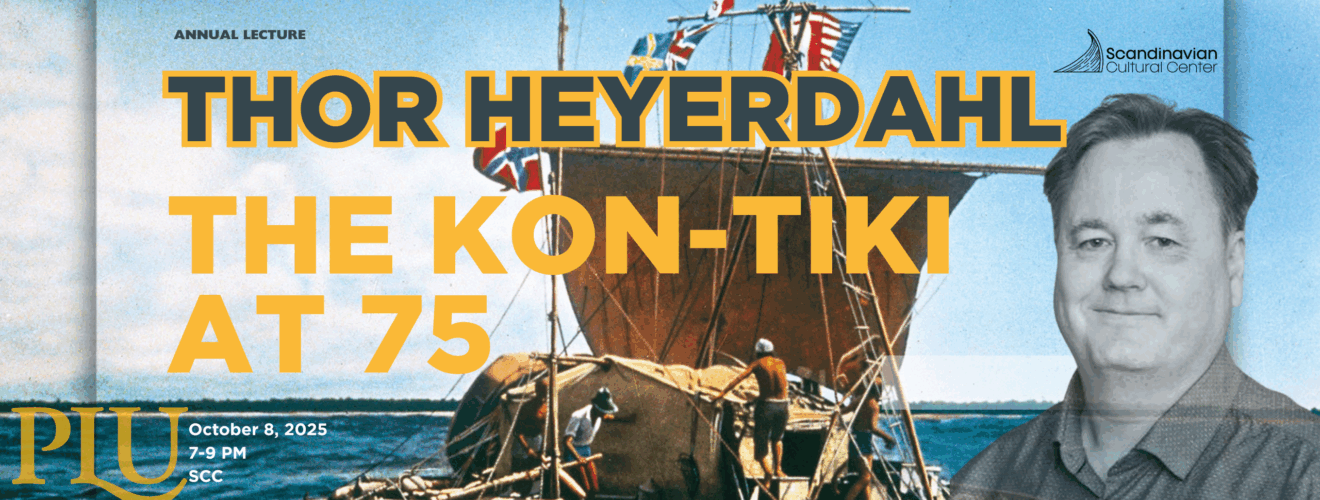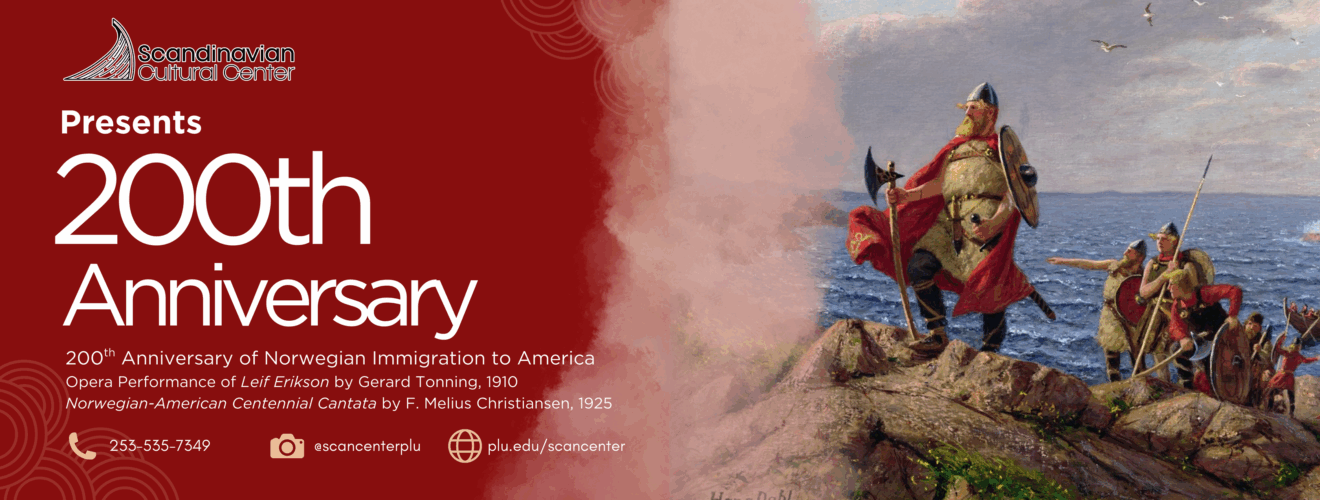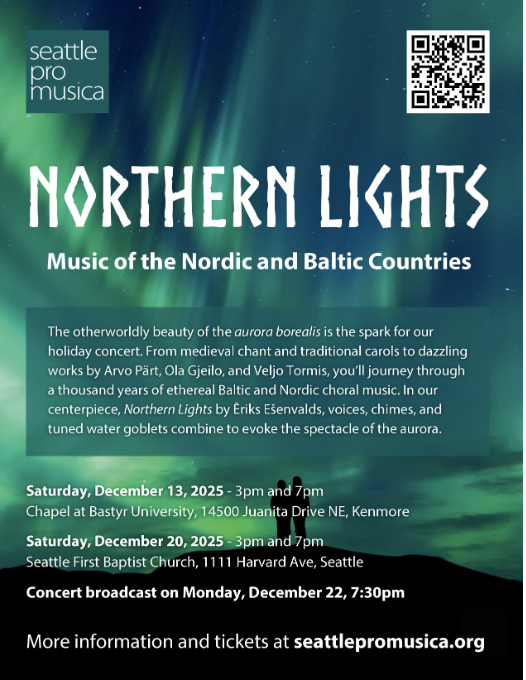Events
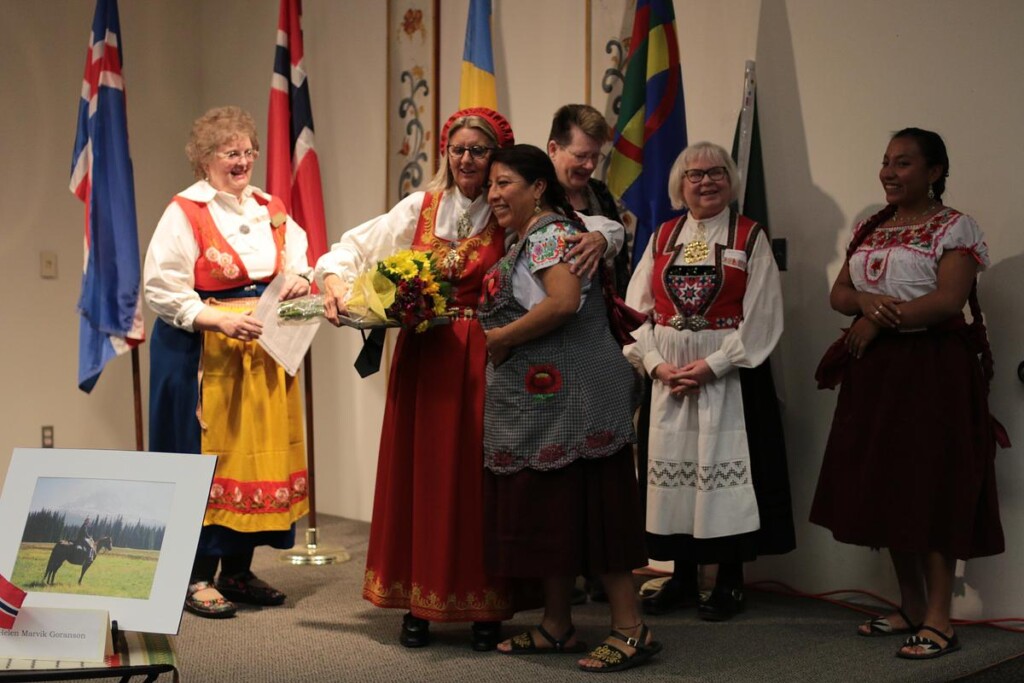
Annual Events
Several events have become annual traditions at the Scandinavian Cultural Center–Swedish Sankta Lucia Fest, Norwegian Julegudstjeneste (Christmas Service), Nordic Christmas Fest (an elegant holiday banquet), and the Norwegian Heritage Festival, just to name a few. In addition to serving the campus community, the Center is made available to Nordic organizations for banquets, meetings, and events. Learn more about these Annual Traditions Below!
An annual event on the PLU campus since 1975, this event is a blend of spiritual songs and scripture readings that tell the story of Jesus, conducted in Norwegian language. The candlelight service has become a family tradition for many in the Tacoma-Seattle area. The event is hosted by the SCC.
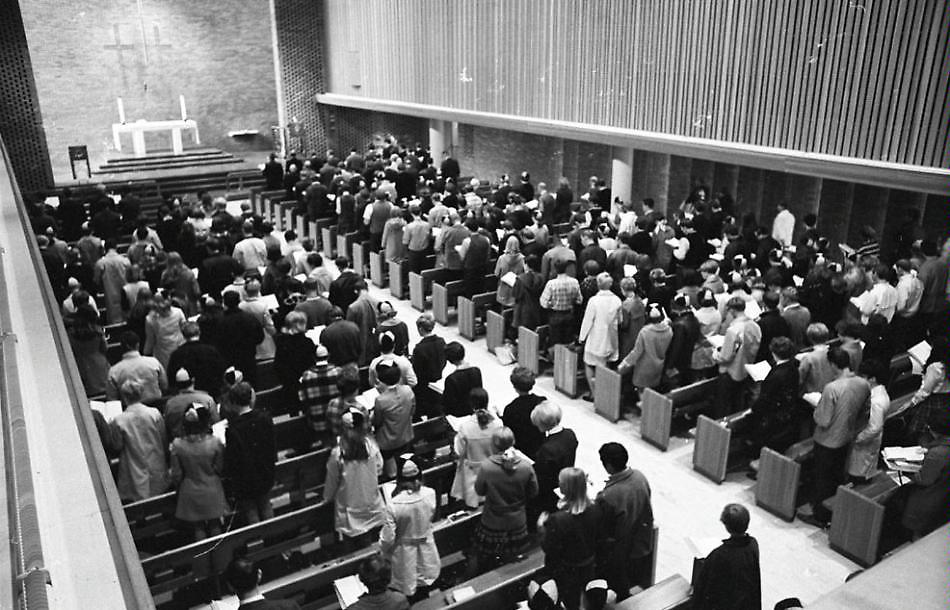
November 14, 2025 Update: The Sankta Lucia Fest is cancelled for 2025 and will resume in 2026.
The Sankta Lucia Fest is celebrated in the Swedish tradition and normally takes place in PLU’s SCC. The hour-long program features Swedish music, song and dance, and a very special children’s performance. The celebration marks the beginning of the Christmas season at PLU and is a favorite of children and adults.
This festival also has an accompanying scholarship, which any PLU student is eligible to apply for!
Who is Sankta Lucia, and why does she have a festival?
Lucia was born to a wealthy family of the nobility in Syracuse on the island of Sicily in the year 284 AD. Her name derives from lux, meaning light. Her father died when she was still an infant and her mother raised her in the new Christian faith. At an early age, Lucia made a secret vow to remain a virgin and to devote her life to serving Christ and the poor. When she came of age, her mother wanted her to marry a man who was not a Christian. During this time her mother became ill, so she and Lucia would go to the tomb of St. Agatha to pray for her mother to be cured. Her mother was cured and, at this time, Lucia told her mother of her secret vow. Her mother, being grateful for being healed, agreed to this. Lucia’s suitor was very unhappy at losing the beautiful young woman and her dowry. He reported Lucia to the authorities as aiding and abetting the Christians. This was, of course, during the time when Christians were being persecuted, thrown to the lions, and burned at the stake. When Lucia refused to renounce her Christian faith, she was ordered burned at the stake. The fire would not light, so she was stabbed with a sword. Lucia became a martyr, as many others had before her.
Perhaps it came through tales of Viking travelers. Some believe it came through Germany and traveled north by seamen and traders. One story tells of Lucia coming on a ship, in the cold, dark winter, bringing food during a famine in Sweden. Under the old Julian calendar, December 13th was the shortest day and longest night of the year. This was the day Lucia came bringing light and hope in their darkest time of year.
In more recent times, the tradition has changed. A daughter of the house, usually the eldest, rises very early on December 13th, Lucia Day, bringing coffee and saffron buns to her parents and family. She wears a white dress and has a wreath of candles on her head. Lucia celebrations also take place in towns, churches, and schools throughout the country.
The Sankta Lucia Fest has been an annual tradition at Pacific Lutheran University for seventy years. It is a very important tradition to the people of Sweden, and it is our desire to keep the tradition alive for Swedes and other Scandinavians in this area. Although it is not a religious ceremony, the Sankta Lucia celebration marks the beginning of the Christmas season, in Sweden and at Pacific Lutheran University.
It isn’t exactly known how the legend of Lucia traveled north to become part of the traditions of Sweden and the other Nordic countries.
What do the candles mean?
Sankta Lucia brought light to the people, and her crown of candles is a symbol of that gift, bearing a similarity to an Advent wreath, which reminds us of the gift of Christ. Each candle in the crown represents a different virtue of Lucia’s character, a reminder of that which lights our lives: hope, mercy, purity, dedication, and faith.
The first candle is the candle of hope. Lucia represents the hope of the coming Christmas season, bringing the birth of a small babe who would be the Light of the World. His birth, life, death, and resurrection bring hope for all time. May this candle of hope burn bright through the Christmas season and throughout the year.
We light the second candle, the candle of mercy. The legend of Lucia commemorates showing mercy to all of God’s people, rich and poor alike. May the spirit of mercy shine in our lives and illuminate the years of those around us.
The third candle, the candle of purity, burns in remembrance of Lucia’s youthful innocence. May we, by the radiance of this candle, be mindful to allow a child-like purity to permeate our lives.
The candle of dedication is the fourth candle we light. Lucia remained true to her faith through persecution and even unto death. May our dedication burn as boldly with dedication and conviction.
The fifth and final candle is the candle of faith. We see in Lucia that her faith was the guide and motivation for life. The light of faith shines in the night, illuminating our path, which would otherwise be dark. Let us pray that we live by our faith with the same hope, mercy, purity, and dedication as Sankta Lucia.
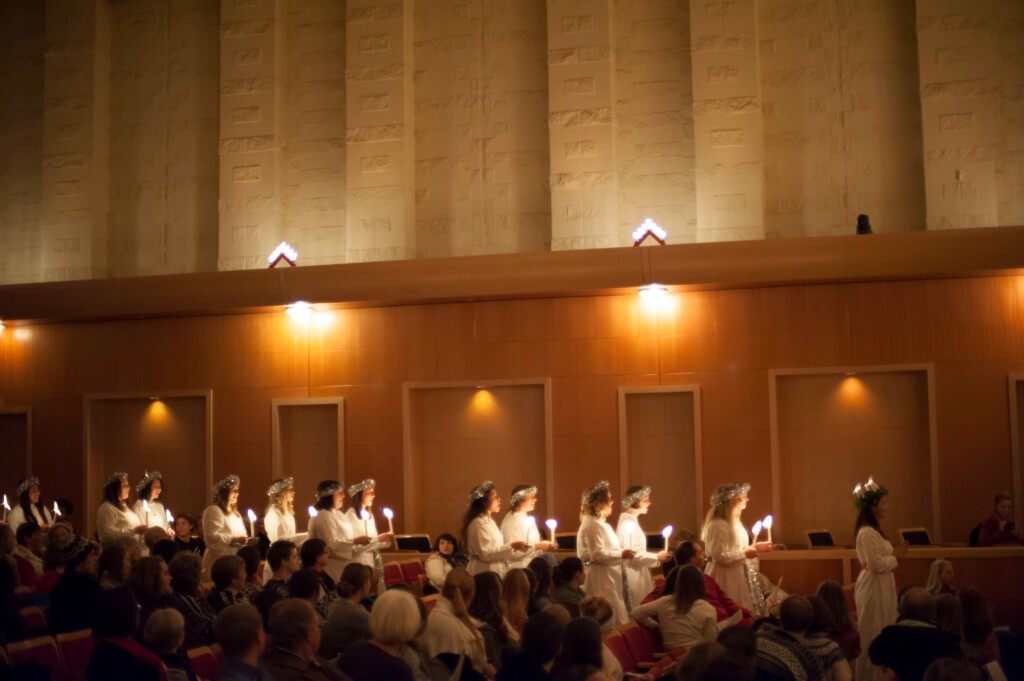
When HM King Olav V of Norway visited Pacific Lutheran University in 1975, local Norwegian-Americans staged a Norwegian Heritage Festival in his honor. It was such a huge success that it became an annual tradition. Annually in March, the festival features Norwegian foods, entertainment, vendors, and crafts and demonstrations (e.g., rosemaling, Hardanger embroidery, spinning, and woodcarving).
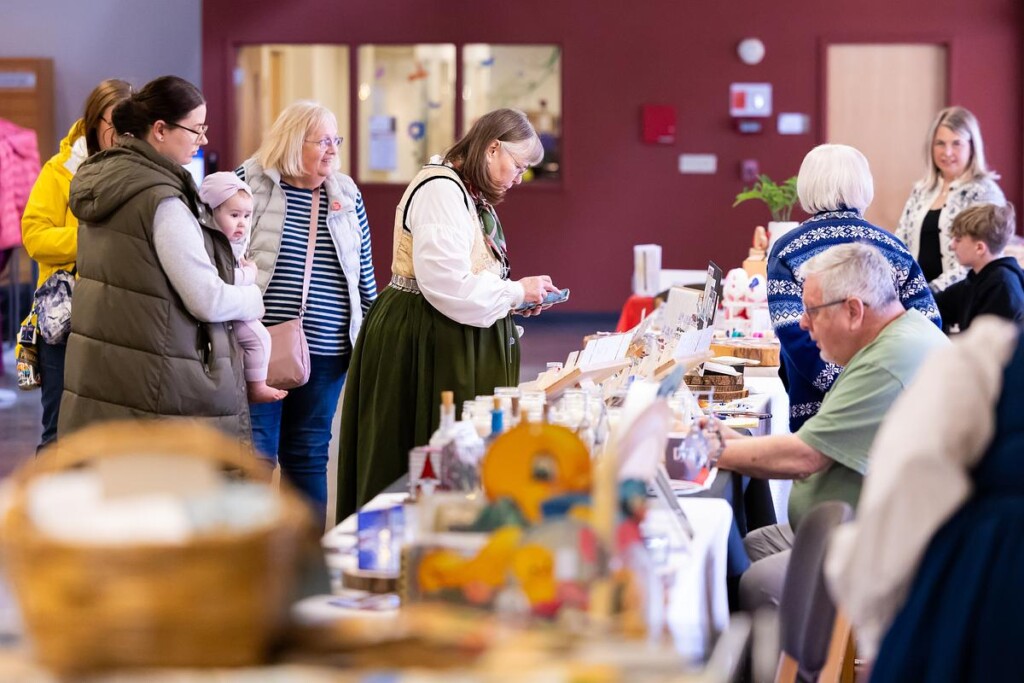
The annual Nordic Christmas Fest has been a much-anticipated event in the SCC for over two decades. The SCC is at its loveliest with candlelight and magical holiday decorations. The evening is filled with great conversation, fantastic food, and lively entertainment. Members will receive invitations to this yearly themed event.
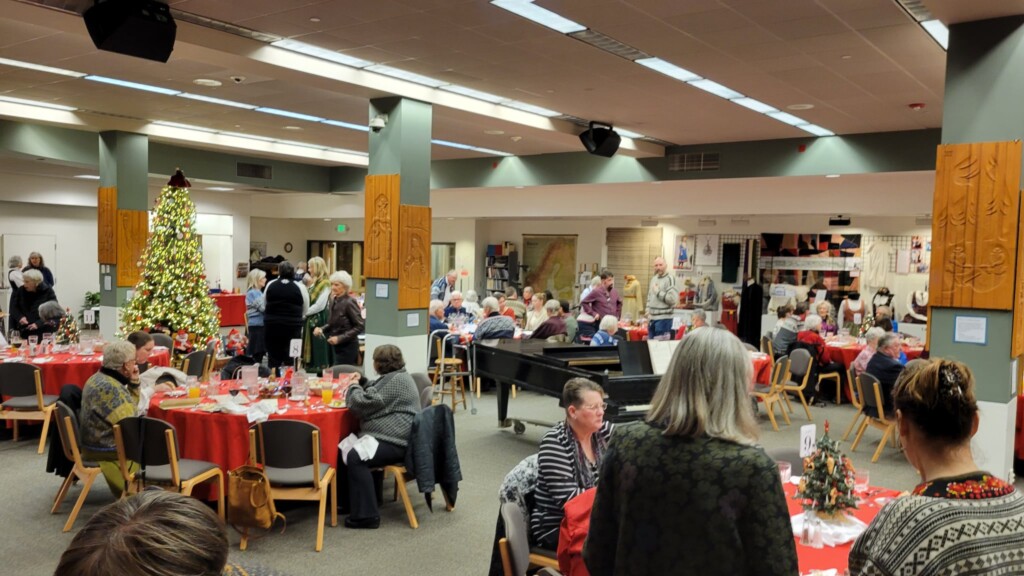
On May 17, 1814, Norwegian delegates signed a constitution that made Norway a country distinct from Denmark and Sweden. This day is celebrated in Norway annually with parades and speeches, and by many Norwegian-Americans. Pacific Lutheran University has its tradition of gathering students, faculty, and friends in Red Square, where a Norwegian flag proudly waves daily in honor of our Norwegian heritage. On the 17th of May, students raise the Norwegian and U.S. flags in a morning celebration, while singing Ja, vi elsker dette landet and the Star Spangled Banner.
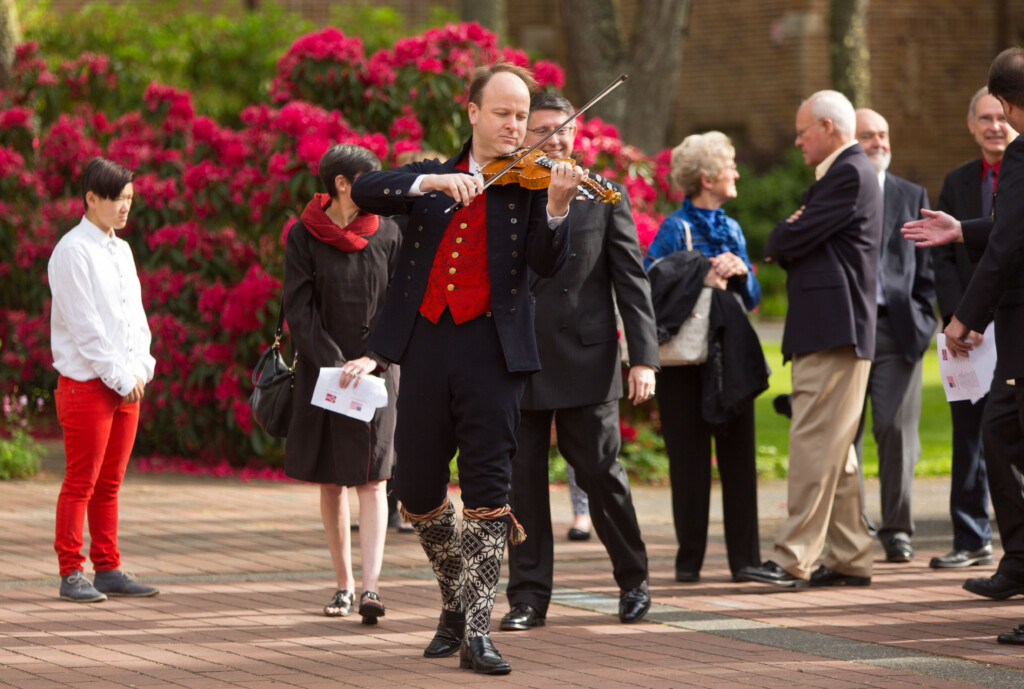
2025-26 Events
Classes
Monthly Dance at the Swedish Club after the Sunday Pancake Breakfasts
Skandia and the Swedish Club are co-sponsoring Nordic dances after the Sunday pancake breakfasts at the Swedish Club. At our first two dances in September and October we had many new dancers with lots of energy and enthusiasm. Music by: Elise Snoey, John Parejko, Mira Dickey, and Patrick Gunning of Fat Fiddles. December 7 and January 4, 1–3 p.m., at the Swedish Club, 1920 Dexter Ave. N., Seattle, WA. $10 per person (+$1 for non-cash sales). The dances
will be fun and easy, including schottis, waltz, and mixers. Short teaching sessions will be interspersed through the afternoon. The focus is on beginners. Singles and couples are welcome. We change partners frequently, and anybody can do either role. Bring clean shoes to change into, with smooth firm soles and low flat heels for easy turning. If you don’t have dance shoes, we have dance socks to help you turn easily. Send any questions to lisa@hambo.us or (206) 258-2580.
Dances
Friday, December 19, 7:30–10:30 p.m.
Skandia Third Friday Dance, 7:30–10:30 p.m., Cedar Valley Grange, 20526 52nd Ave W, Lynnwood, WA. $15; $10 for Skandia members. Info: www.skandia-folkdance.org. Harry Khamis and Pat Pi will teach Möllevitt. This elegant minuet from Skåne in southern Sweden is not the typical couple turning dance that we are used to in Swedish dances. Rather, it is done with partners facing each other in one large circle or in a contra line, and it has very little turning. The tradition-bearers, Stina and Lennart Jeppsson, taught this dance as one of the diplom dances for the 2017 medal testing. Two bands will play this evening—the Skandia Spelmanslag, Seattle’s wonderful open-membership ensemble and The Guys (Bob, Chris, and John), a trio of great guys playing great tunes on the fiddle!
Tacoma Waltz dance lessons and dance on Saturday, December 27
Relax after the holiday season at our Nordic dance on Saturday, December 27. Lesson from 7:30 – 8:30 p.m. Music from 8:30 – 10 p.m. Harry Khamis and Pat Pi will continue to teach the basics of Waltz dancing. Music will be provided by Nordic Exposure. Everyone is welcome. Mixer and pattern dances are taught. No partner needed. Masks are no longer required. The dance is held at Normanna Hall, S. 15th and Martin Luther King Way, Tacoma. Price is $10 for adults. $7 for Sons of Norway Norden 2 members ($10 for Norden couples). $5 for non-dancers. Students and children are free. More information: Karen Goettling, karengoettling@gmail.com, 253-759-3731
Music Events
Skandia Third Saturday live jam, December 20, 10 a.m.–noon. Cindy Scheyer has graciously agreed to host Skandia’s live Third Saturday Jam on December 20. Thank you, Cindy! For further information, call (206) 406-2992 or email music@skandia-folkdance.org. All instruments and voices are welcome! Bring your favorite tunes to share. You’re welcome and encouraged to bring snacks to share. Coffee and tea will be provided. Masks are no longer required. However, if you are feeling sick or have been exposed to COVID, please don’t come. Thank you for keeping everyone healthy.




